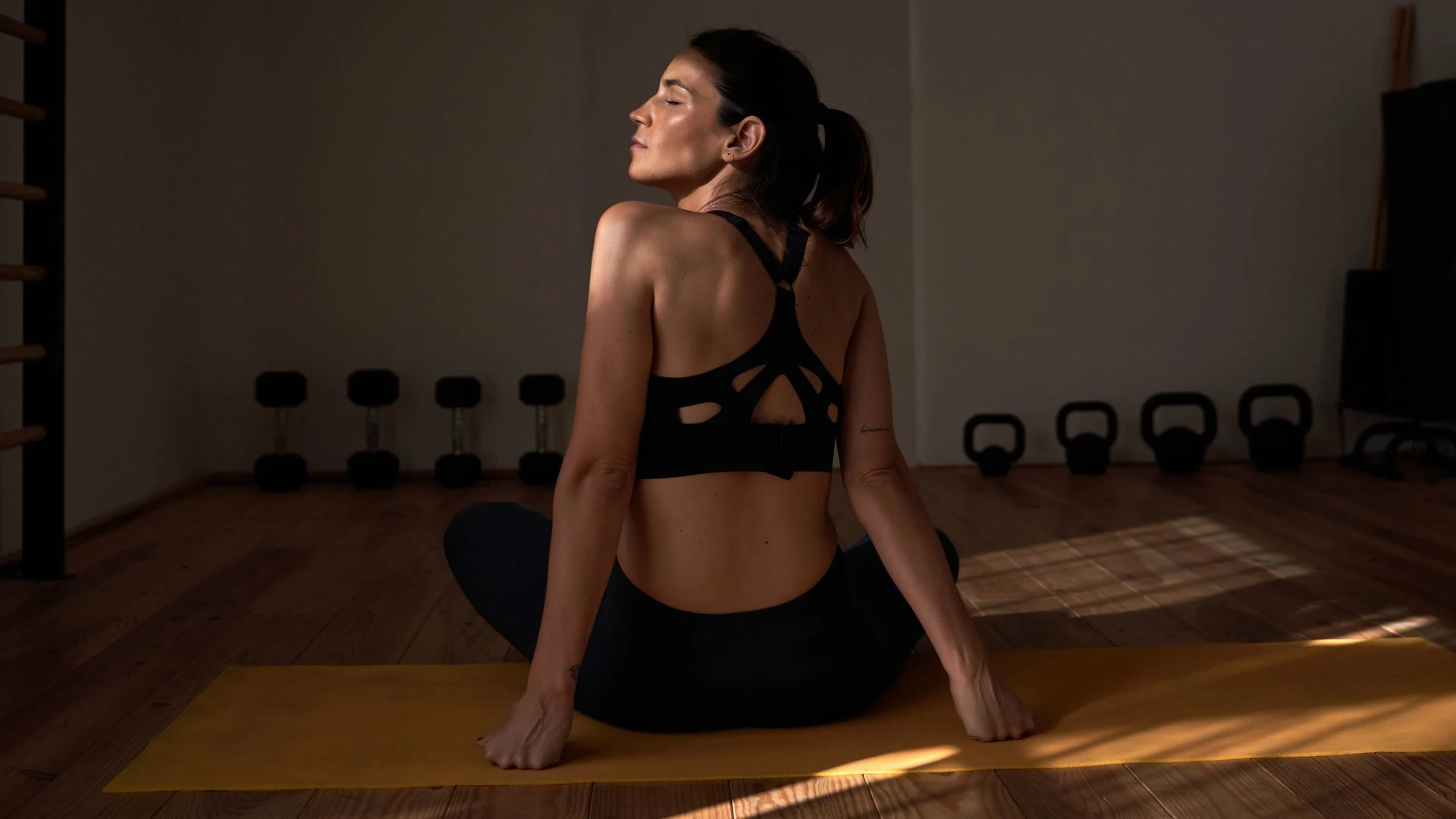Copyright hellomagazine

If you find yourself waking up during the night or have trouble falling asleep in the first place, practising yoga may be the solution you need. It helps you relax any time of day, improves your flexibility and is an excellent tool to reduce stress and anxiety and prepare your body for sleep. Practising yoga really is one of the best ways to improve sleep quality without medication or supplments like melatonin, combining breathing, meditation and postures to help your body before bed. The best part is that you don't need to be an expert yogi to benefit - there are simple postures, apt for beginners, that can help in an instant. French yoga and pilates instructor Virginie Hampl is an expert on the topic, teaching her 300,000 Instagram followers how to improve their health and quality of life with some simple tips. We took note when she showed a specific posture that she says is an effective tool for better sleep. She even provided a step-by-step how-to for the move that also is said to help prevent migraines, improve digestion and reduce stress and anxiety - some of the main causes of insomnia. But before we see how this posture is done - the instruction reel, which we share below, has over 60k+ likes! - first let's find out how exactly yoga helps us sleep. The benefits of practising yoga for sleep When you go to bed with an overloaded and overwhelmed mind, you're more likely to have trouble falling asleep. This is where practising yoga comes in. Gently moving your body, and combining the moves with breath control, helps calm the nervous system and reduce the stress hormone cortisol. In fact, various studies, such as those carried out by the U.S. National Center for Complementary and Integrative Health (NCCIH), show that regular yoga practise can improve sleep quality in people with diseases and health challenges, from cancer to arthritis and menopause. Yoga also helps stabilise circadian rhythms, which promotes deeper rest. Regular yoga boosts both the the number of hours slept, and the quality of sleep. One study concluded that more than 55% of people who practice yoga experience improvements in the quality of their rest, while 85% say they have reduced their stress levels. Yoga breathing technique to reduce stress Stress and anxiety are two of the biggest enemies of restful sleep. Doing yoga regularly helps counteract these factors because the postures, performed along with breathing techniques. stretch and relax the muscles, One of especially useful breathing technique is alternate nostril breathing, called Nadi Shodhana, which some believe helps balance the left and right brain hemispheres. With just 10 to 15 minutes, you can begin to release mental and physical tension that has built up throughout the day, helping lead to deeper and more restorative sleep. Nadi Shodhana involves inhaling and exhaling through one nostril at a time, alternating them in each cycle, to balance the body's energies, calm the mind and improve concentration. Here's how to do it: Find a quiet spot: Sit in a comfortable position with a straight back and relaxed shoulders. Hand placement: Use your right hand (or your left if you're a left-hander). Place your right thumb on your right nostril and your ring or little finger on your left nostril. Your index and middle fingers can either rest on your forehead or be tucked into your palm. Close the right nostril: Gently close your right nostril with your right thumb. Inhale through the left nostril: Inhale deeply and slowly through your left nostril. Close the left nostril: At the end of the inhalation, close your left nostril with your ring or little finger. Open the right nostril and exhale: Release your thumb to open the right nostril and exhale slowly. Inhale through the right nostril: Keep your left nostril closed and now inhale through your right nostril. Close the rght nostril: Close your right nostril again with your thumb. Exhale through the left nostril: Release your ring or little finger to open your left nostril and exhale. The yoga posture to help you sleep Yoga influencer Virginie Hampl has popularised a posture that she recommends practising just before sleeping to promote relaxation. Hampl has explained that the simple but effective pose will help lead to better rest and also has more benefits, including helping improve your posture, reduce migraines and relieve anxiety. To perform the pose, you'll need a few pillows and about five to ten minutes of your time. Begin by kneeling on a soft surface - for example your bed or a yoga mat, and inhale deeply. Then imagine a thread pulling your head upwards, stretching your spine. Next, let your body fall gently backwards onto the pillows, extending your arms over your head. If you're a beginner, Hampl recommends using three pillows for support at first; you can gradually reduce the number of pillows as you get used to doing the pose. Hold the position for a few minutes. Breathe deeply as you calmly feel your back decompress and release the tension of the day. Other recommended yoga postures for sleeping In addition to the Virginie Hampl-approved pose, there are other poses you can try if you're striving for better sleep. Balasana (Child's Pose): Ideal for releasing accumulated tension in the lower back and hips. Kneel and sit on your heels, stretch your arms forward and rest your forehead on the floor. It is a posture that helps calm the nervous system. Viparita Karani (Legs Up the Wall): This pose improves blood circulation. Lie on your back with your legs raised against a wall so your body is in an L shape. Relax your torso downward and breathe. This position is also useful for reducing leg swelling. Supta Baddha Konasana (Reclined Bound Angle Pose): Perfect for those who feel heavy after dinner before heading to sleep, this move opens the hips and relaxes the abdominal muscles. Lying on your back, bring the soles of your feet together and bend your knees outward. Savasana (Corpse Pose): Often used to close a yoga session, this pose involves simply lying on your back with your arms and legs extended. It is ideal for complete body relaxation. Jathara Parivartanasana (Spinal Twist): After lying down on your back, stretch your arms wide on the floor and bring one knee towards your chest. Allow that knee to fall to the opposite side while turning your face to the opposite side. Return to the centre and then repeat with the other knee. This move gently stretches the spine, which relieves tension in the back and shoulders.



